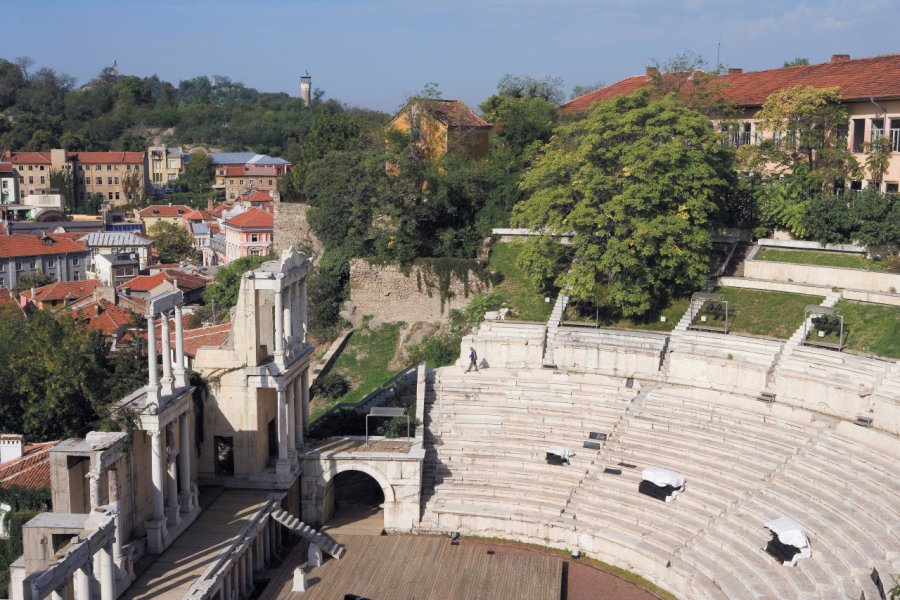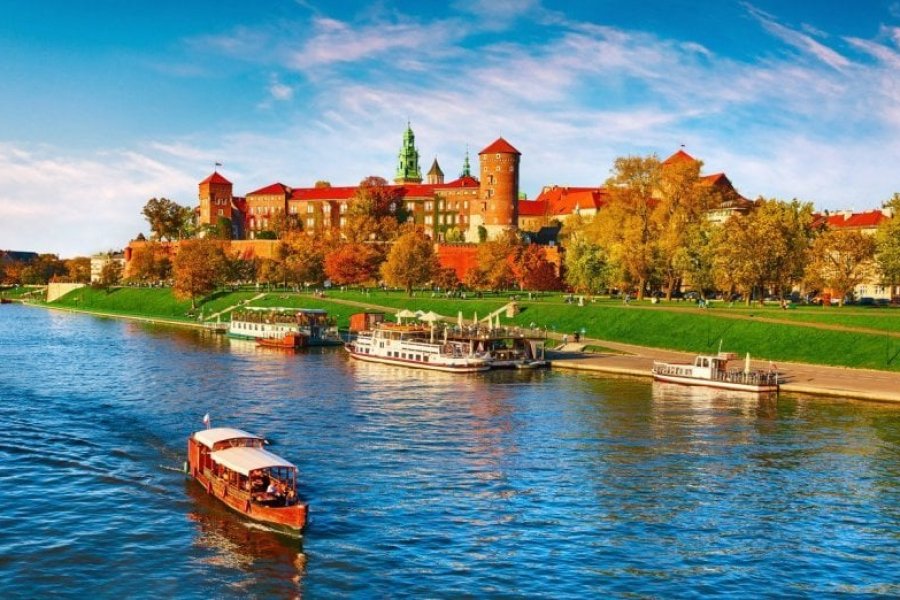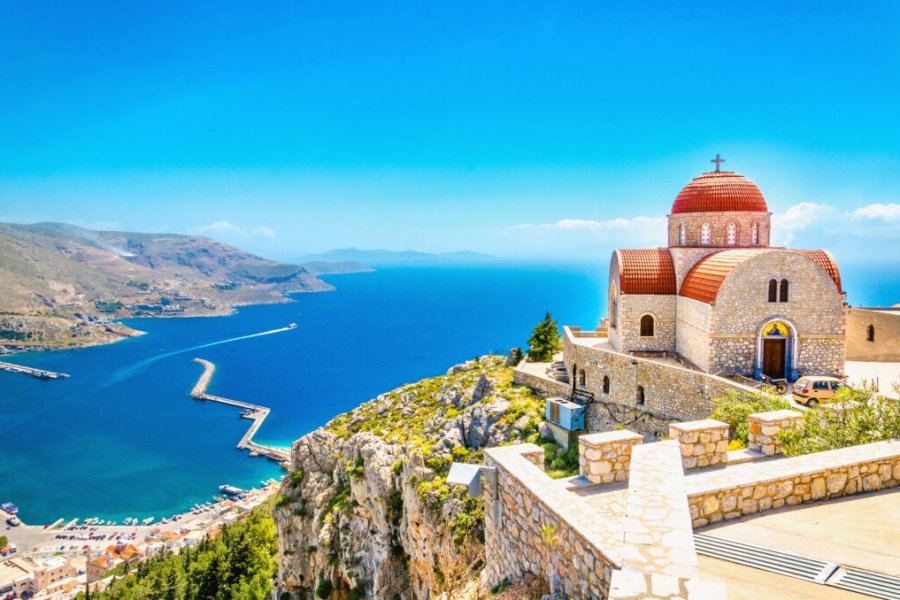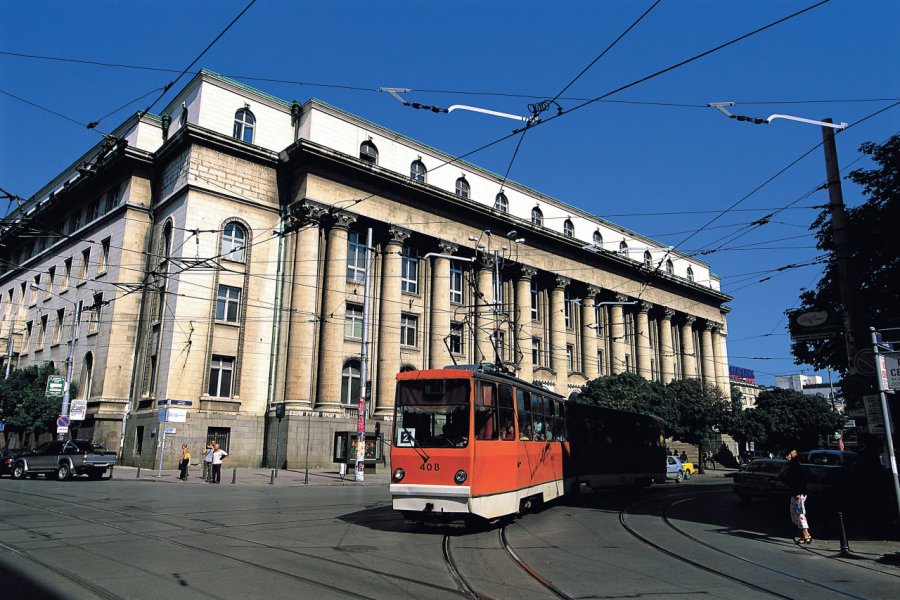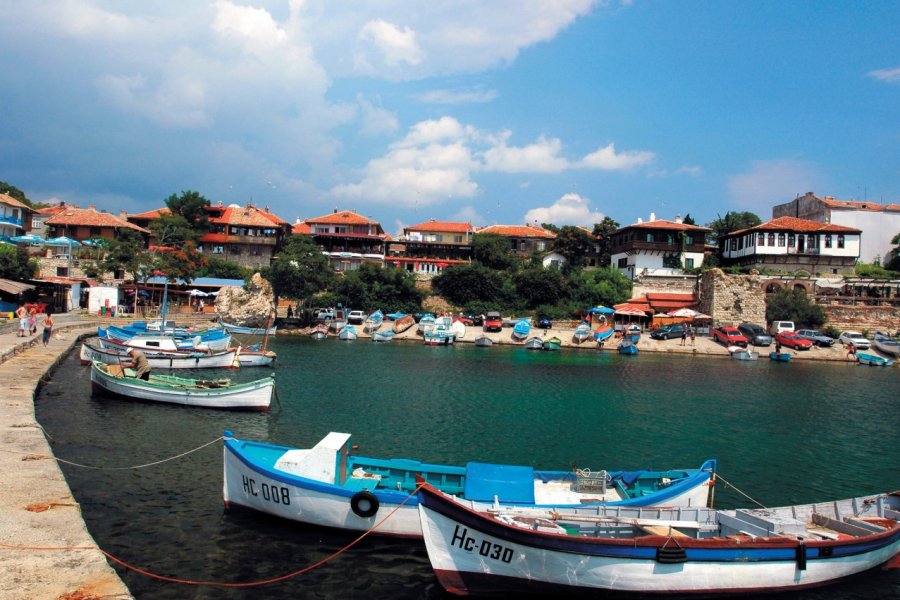Travel guide Bulgaria
In the south-east of Europe, bordered to the east by the Black Sea, Bulgaria is appreciated by tourists for its seaside resorts, among which the festive Varna, notably established in Albena, Slantchev Briag and Golden Sands. It also attracts hiking enthusiasts for its natural environment, lakes, forests and mountains. Its capital, Sofia, is rich in historical monuments and houses jewels such as the Saint-Alexander cathedral or the National History Museum. In addition, there are major remains such as the Roman amphitheater (2nd century) in Plovdiv. This destination is also characterized by its location between Europe and the Middle East, and its history where communist and capitalist episodes follow each other, all balanced by the ancestral Balkan culture. So to enjoy the great landscapes and go in search of the Balkan identity, dare to go down some unusual paths. Often neglected by travelers in favor of its neighbors such as Greece, Turkey and Romania , enjoy traveling in a country that remains affordable while being rich in mountains and beaches, historical cities and natural heritage, while enjoying a Slavic culture tinged with the East. So, to make the most of your journey between wild nature, steep mountains and sunny beaches, and to make sure you don't miss out on any of the rich heritage, from Roman ruins to Byzantine remains, use your Bulgaria travel guide.
What to see, what to do Bulgaria?
-
Book an activity
-
Customized travel
- The most beautiful cities Bulgaria
When to go Bulgaria ?
There is a strong disparity between the low tourist season (October-April) and the high season (May-September), especially on the coast, in terms of prices, affluence, opening of infrastructures, museums, etc. In the mountains, the contrast is less strong, because there are ski resorts in winter; the off-season is rather in November and March, when the cold is there but not the snow. In the rest of the country, the seasons also play a role, but less so. The capital Sofia is the least affected by the seasons. A few cultural or spiritual events can help you choose your dates and itinerary. Folk carnival of the Koukeri in Chiroka Laka, the first weekend of March. Religious festival in Buglari, in May. Folk festival in Haskovo, end of May. Rose Festival in Kazanlak, the first week of June. Varna summers, classical music and jazz, from June to August Appollonia Festival in Sozopol, end of August-beginning of September. But the most spectacular, the most typical and the most popular are the orthodox feasts in the monasteries(Rila, Batchkovo, Troyan), at Easter, at Christmas, at Pentecost, and in general all the traditional feasts... Your tourist guide will be useful to make your choice of dates and itinerary.
Suggested addresses Bulgaria
Travel Bulgaria
-
Find a hotel
-
Car Rental
-
International e-SIM package
-
Find a local agency
In any stay in Bulgaria, Sofia is a must (unless you choose only the coast), as the capital and because it is home to museums and monuments of the first rank; also because it is an absolute centre of transport. As far as the different regions are concerned, each one has its own charm and interest. The coast attracts people who want to combine culture with seaside activities. The mountainous regions of the Southwest offer a large number of sites in a beautiful natural environment, while being at a short distance from Sofia. The Great Balkan (Stara Planina), in the centre, is an authentic, picturesque region at the heart of the Bulgarian soul. The plains of Thrace and the Danube are less attractive for their landscapes, but some places are rich in historical sites and fantastic nature reserves. Here are different tours that will inspire you for your trip to Bulgaria.
Find unique Stay Offers with our Partners
How to go Bulgaria
How to go alone
Going alone is a very feasible option for this safe destination where tourism is now well established. Take a dry flight and you can manage if you are a bit experienced in travel. You will easily find your way, accommodation on your route and small restaurants along the way. In town, a stopover at the tourist offices will make things easier for you.
How to go on a tour
Trips of 8, 10 or 15 days, even three weeks are proposed to discover Bulgaria. Generally you land in Sofia and leave by bus or mini-bus for a themed trip: heritage, nature, hiking, beaches... Cruises on the Danube are also available. The formula of the organized trip is well suited for an easy and efficient discovery of this country.
How to get around
The fastest, but most expensive way to reach the Black Sea coast from Sofia is by plane. On the Black Sea coast, the main ports are connected by boat, especially in summer. A boat on the Danube runs between Roussé and Vidin. The Bulgarian bus network is even more important than the train network, which is often more comfortable, but significantly more expensive. The train does not serve the mountain.
Featured articles Bulgaria
Discover Bulgaria
Did you know that you can see bears in the Rhodopes? This part of your guidebook on Bulgaria aims to inform you about the history, geography, sociology and to familiarize you with the local daily life. A good introduction to prepare your stay and make the most of your trip. Other themes are addressed that can guide your discovery of the country, for example biodiversity, heritage, culture or gastronomy. Files are devoted to points even more specific to this destination such as the culture and exploitation of roses, or the beauty of the monasteries. This introductory discovery leads you to places and points of interest throughout the guide. And since you will have to leave again one day, we will advise you on what you should pack when you return.
Pictures and images Bulgaria
The 12 keywords Bulgaria
1. #Disappeared
In all towns, and even more noticeably in villages, trees, road signs, and doors are covered with death notices (NEKROLOZI - НЕКРОЛОЗИ), usually with a picture of the deceased. This is not so much to inform of a recent death, but rather to keep the memory of the deceased within the community.
2. #Kat
Beware, the traffic police (KAT) are no longer joking. With a legal alcohol limit of 0.5 g/l, frequent speed checks and high fines, corruption has declined and negotiating a violation has become very risky. However, people still make headlight calls to warn of the presence of police!
3. #Koukeri

Carnival figures whose mission is to chase away evil spirits at the end of the harsh winter, the koukeri (кукери) are dressed in long-haired fur costumes, horns and large bells for noise. Only hardy men are initiated into this tradition, which dates back to ancient times in connection with the festivities of the god Dionysus.
4. #Martenitzi
The martenitza (МАРТЕНИЦА), an amulet made of red and white twisted thread, is worn on the wrist from March1. Vendors line every street. Martenitzi are given as gifts, wishing each other good health. They are worn until a swallow or a stork is seen. Then you can cut them and tie them to the first flowering tree you find.
5. #Nazdravé!
The word you will hear the most in Bulgaria is "nazdravé!" (НАЗДРАВЕ!). It is mandatory to say this for the first toast at the table, but also throughout the evening. You will need to do this with each person who raises their glass while looking them in the eye. Dare the "nazdravé!", otherwise you will be a "party crasher"...
6. #Orpheus
Orpheus (ОРФЕЙ) is a character from Greek mythology, the son of a Thracian king and the muse Calliope, who is said to have been born in the Rhodopes. According to legend, this Thracian singer exceeded the god Apollo himself in talent and could calm the most ferocious beasts with his lyre. A symbolic tomb is located in Tatul in the Rhodopes.
7. #Yes and no
Bulgarians make the opposite signs to ours to say yes (DA - ДА) and no (NE - НЕ). In fact, they use at least four head signs: both yes and no like us, but also YES with the head nodding from left to right, but along a variable axis and NO with the head nodding up and down with the chin raised high (did you follow?).
8. #Roses

Although the Bulgarian rose is Rosa damascena (Damask rose), it has become one of the symbols of the country. The Valley of the Roses covers about 70% of the world's needs for rose extract or oil, which places Bulgaria in the lead. The picking is done in May, before daybreak, mostly by women. A spectacle!
9. #Streets (Ulitsa)
Most of the street names had been decided by the communist authorities to pay tribute to the heroes of the Resistance or to commemorate certain important dates. Bulgaria has kept these names, but some of them are no longer unanimous. So more and more names are changed in order to get out of the post-communist period.
10. #Pedestrian streets

The city centers of the main Bulgarian cities are reserved for pedestrians. Sofia escapes this rule, except for the narrow streets in the center and Vitosha Boulevard. In other cities, a central square is usually used as a landmark, and all around it wind streets closed to motor vehicles. This makes the visit more pleasant.
11. #Bulgarian bread
At the table, it is mandatory to put at least two slices of bread (HLYAB - ХЛЯБ) per person! By the way, Bulgarians always say "earn your bread" instead of "earn your living" as elsewhere. This is quite a symbol and during official ceremonies to welcome visitors, they greet them with bread and salt.
12. #Yaourt

It is certainly the only food that is immediately identified as Bulgarian. The famous ferment Bacilicus bulgaricus, which lives only in the Balkans, gives these yogurts a very special taste. There are different kinds of natural yogurt(kisselo mliako) and it is a real treat to taste the real yogurt, prepared at home.
You are from here, if...
You take your coffee from an automatic coffee machine that can be found on almost every street corner.
You don't hesitate to overtake in the mountain roads, because you are confident and zigzagging between the crevasses is very easy for you.
When you are invited, you do not come empty-handed and offer for example a box of chocolates and a bouquet of flowers to your host... with an odd number of flowers.
For you, passing a horse-drawn cart on the road does not surprise you, or you yourself are the driver of this cart and transport your farm equipment most often or other members of your family.
Living in the mountains (most of the time), you go to the village springto fill up your 5 liter canswith water.
In winter, you are ready to travel several hundred kilometers to go skiing for a weekend.

